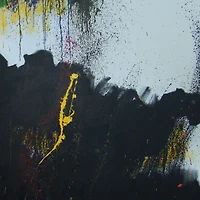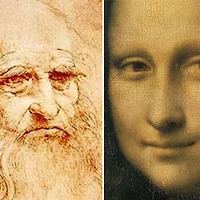Painter Edvard Munch’s iconic masterpiece “The Scream” is up for auction. We’ll look at how that image — “The Scream” — has seared itself into our culture.
Norwegian painter Edvard Munch’s masterpiece “The Scream” is one of the best-known works of art in the world. The hairless skull, the wide eyes, the wide-open mouth between two hands of the silent, wailing figure on the bridge. The essence of angst in the human condition, in one universally powerful image.
Today, it goes on the auction block. Huge money is expected. But it’s the image itself, and the story behind it, that interests us. From a real bridge between a slaughterhouse and a madhouse. To the heart of the human condition.
This hour, On Point: Edvard Munch’s “The Scream.”
-Tom Ashbrook
출처: http://onpoint.wbur.org/2012/05/02/edvard-munchs-the-scream-up-for-auction
와아! 나도 소리를 질러본다.
scream: give a long, loud, piercing cry or cries expressing excitement, great emotion, or pain.
우리말로는 비명이나 절규를 말한다.
Edvard Munch Part 1
Edvard Munch Part 2

From Wikipedia, the free encyclopedia
Edvard Munch
Edvard Munch
(Norwegian pronunciation: [ˈmʉŋk], 12 December 1863 – 23 January
1944)[1] was a Norwegian painter and printmaker whose intensely
evocative treatment of psychological themes built upon some of the main
tenets of late 19th-century Symbolism and greatly influenced German
Expressionism in the early 20th century. One of his most well-known
works is The Scream of 1893.
Childhood
Edvard Munch was born in a rustic
farmhouse in the village of Ådalsbruk in Løten, to Christian Munch, the
son of a priest. Christian was a doctor and medical officer who married
Laura Catherine Bjølstad, a woman half his age, in 1861. Edvard had an
elder sister, Johanne Sophie (born 1862), and three younger siblings:
Peter Andreas (born 1865), Laura Catherine (born 1867), and Inger Marie
(born 1868). Both Sophie and Edvard appear to have inherited their
artistic talent from their mother. Edvard Munch was related to painter
Jacob Munch (1776–1839) and historian Peter Andreas Munch
(1810–1863).[2] The family moved to Christiania (now Oslo) in 1864 when
Christian Munch was appointed medical officer at Akershus Fortress.
Edvard's mother died of tuberculosis in 1868, as did Munch's favorite
sister Johanne Sophie in 1877.[3] After their mother's death, the Munch
siblings were raised by their father and by their aunt Karen. Often ill
for much of the winters and kept out of school, Edvard would draw to
keep himself occupied, and received tutoring from his school mates and
his aunt. Christian Munch also instructed his son in history and
literature, and entertained the children with vivid ghost-stories and
tales of Edgar Allan Poe.[4] Christian's positive behavior toward his
children was overshadowed by his morbid pietism. Munch wrote, "My father
was temperamentally nervous and obsessively religious—to the point of
psychoneurosis. From him I inherited the seeds of madness. The angels of
fear, sorrow, and death stood by my side since the day I was born."[5]
Christian reprimanded his children by telling them that their mother was
looking down from heaven and grieving over their misbehavior. The
oppressive religious milieu, plus Edvard's poor health and the vivid
ghost stories, helped inspire macabre visions and nightmares in Edvard,
who felt death constantly advancing on him.[6] One of Munch's younger
sisters was diagnosed with mental illness at an early age. Of the five
siblings, only Andreas married, but he died a few months after the
wedding. Munch would later write, "I inherited two of mankind's most
frightful enemies—the heritage of consumption and insanity."[7]
Christian Munch's military pay was very low, and his attempts at
developing a private side practice failed, keeping his family in
perennial poverty.[3] They moved frequently from one sordid flat to
another. Munch's early drawings and watercolors depicted these
interiors, and the individual objects, such as medicine bottles and
drawing implements, plus some landscapes. By his teens, art dominated
Munch's interests.[8] At thirteen, Munch had his first exposure to other
artists at the newly formed Art Association, where he admired the work
of the Norwegian landscape school. He returned to copy the paintings,
and soon he began to paint in oils.[9]
The Scream
Painted
in 1893, The Scream is Munch's most famous work and one of the most
recognizable paintings in all art. It has been widely interpreted as
representing the universal anxiety of modern man.[40] Painted with broad
bands of garish color and highly simplified forms, and employing a high
viewpoint, the agonized figure is reduced to a garbed skull in the
throes of an emotional crisis. With this painting, Munch met his stated
goal of "the study of the soul, that is to say the study of my own
self".[41] Munch wrote of how the painting came to be: "I was walking
down the road with two friends when the sun set; suddenly, the sky
turned as red as blood. I stopped and leaned against the fence, feeling
unspeakably tired. Tongues of fire and blood stretched over the bluish
black fjord. My friends went on walking, while I lagged behind,
shivering with fear. Then I heard the enormous, infinite scream of
nature."[42] He later described the personal anguish behind the
painting, "for several years I was almost mad… You know my picture, 'The
Scream?' I was stretched to the limit—nature was screaming in my blood…
After that I gave up hope ever of being able to love again."[43] In
summing up the painting's impact, author Martha Tedeschi has stated:
"Whistler's Mother, Wood's American Gothic, Leonardo da Vinci's Mona
Lisa and Edvard Munch's The Scream have all achieved something that most
paintings—regardless of their art historical importance, beauty, or
monetary value—have not: they communicate a specific meaning almost
immediately to almost every viewer. These few works have successfully
made the transition from the elite realm of the museum visitor to the
enormous venue of popular culture."[44] The Scream has four versions:
three paintings (1893, 1895 and 1910), and one lithograph (1895). The
1910 painting was stolen in 2004, and recovered in 2006 with limited
damage. The 1895 painting sold at auction on 2 May 2012 for
US$119,922,500, including commission.[45]
by wikipedia
정신나간 사람이 칼을 들고 쫒아와도 공포에 소리를 지른다.
가족이란 무게가 아버지를 쫓아와도 공포에 소리를 지른다.
뉴욕시티에선
낮이고 밤이고,
앰블란스가
스크림을 하면서 달린다.
세상을 살아가는 우리들의 모습이 그대로 표현되어 있다.
덕분에 소리 질러보자~ 아~ 아~

Scream이란 단어를 보니 Cream이란 단어 생각이 난다. 크림은 커피의 맛을 마일드하게 하고 케익이나 신선한 과일 위에 올려서 먹으면 그 맛 죽여준다.
문제 1
the best of all. 우리말로 하면 "최고"나 "최우수"라는 말이다.
이런 의미로 자주 사용하는 말이 있는데 무엇일까? Cream이 들어간다.
답은 (쉬운)미국생활영어-2 집에 가는중이야 에 가면 있다.
아래 글을 읽기 전에 답을 꼭 보고 왔으면 좋겠다. Cream에 대한 느낌이 오는지?
그렇다면 Scream and Cream이란 무엇일까?
힌트를 주면~ 위에 올린 스크림 말고 중요하면서 은밀히 하는 스크림이 있다.
언제일까?
라이프를 가볍게 살아야 한다.
무거운 짐 다 던져 버리고 와서 음악도 듣고 영어도 하고~ 우스개 소리도 하면서 살아갔으면 좋겠다.
전에 이런 유사한 이야기가 있었다. 여기 가면 있네. 스티브 밀러 밴드 "아브라카다브라"

저질스러우면서 즐거운 살사댄스!
이 세상은 남자들의 세상
말하는 영어를 해라-1 chop! chop! chop!
posted by 써니의 뉴욕노트 & 잭스피킹 호흡영어











